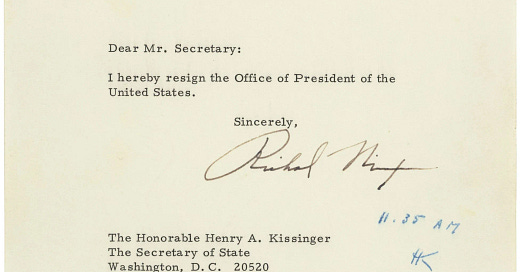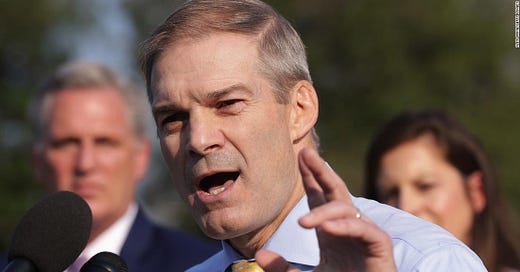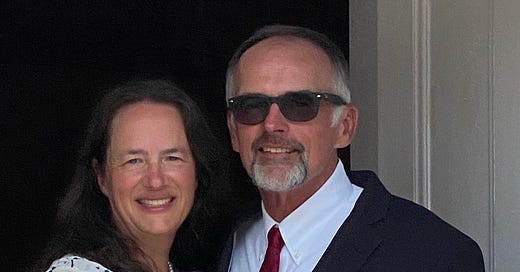
New York Times journalists Maggie Haberman, Charlie Savage, and Luke Broadwater yesterday reported that in a memo dated December 6, 2020, Trump lawyer Kenneth Chesebro laid out a plan to overturn the results of the 2020 presidential election that he acknowledged was “a bold, controversial strategy” that he believed the Supreme Court would “likely” reject.
Still, he presented the plan—while apparently trying to distance himself from it by writing “I’m not necessarily advising this course of action”—because he thought it “would guarantee that public attention would be riveted on the evidence of electoral abuses by the Democrats, and would also buy the Trump campaign more time to win litigation that would deprive Biden of electoral votes and/or add to Trump’s column.”
The plan was essentially what the Trump campaign ultimately tried to pursue. It called for Trump-Pence electors in six swing states Biden had won to meet and vote for Trump, and then to make sure that in each of those states there was a lawsuit underway that “might plausibly” call into question Biden’s victory there. Then, Vice President Mike Pence would take the position that he had the power not simply to open the votes but also to count them, and that the 1887 Electoral Count Act that clarified those procedures was unconstitutional.
Key to selling this strategy, Chesebro wrote, was messaging that constructing two slates of electors was “routine,” and he laid out a strategy of taking events and statements out of context to suggest support for that messaging.
This was, of course, a plan to deprive American voters of their right to have their votes counted, as the federal grand jury’s recent indictment of former president Trump charged, but Chesebro concluded: “it seems advisable for the campaign to seriously consider this course of action and, if adopted, to carefully plan related messaging.”
Three days later, Chesebro wrote specific instructions to create those fraudulent electors, and they were off to the races.
Chesebro is identified as Co-Conspirator 5 in the grand jury’s recent indictment of Trump.
It is an astonishing thing to read this memo today.
Forty-nine years ago, on August 9, 1974, President Richard Nixon wrote one line to Secretary of State Henry Kissinger: “I hereby resign the Office of President of the United States.” In late July the House Judiciary Committee had voted to recommend articles of impeachment against the president for obstruction of justice, abuse of power, and contempt of Congress for his attempt to cover up the involvement of his people in the June 1972 burglary of the Democratic National Committee headquarters at the Watergate Hotel in Washington, D.C.
The Watergate break-in was part of the Nixon campaign’s attempt to rig the 1972 election, in this case by bugging the Democrats’ headquarters, and Republicans wanted no part of it. When the White House produced a “smoking gun” tape on August 5, revealing that Nixon had been in on the cover-up since June 23, 1972—and implying that he had been in on the bugging itself—those Republicans who had been defending Nixon abandoned him.
On the night of August 7, 1974, a group of Republican lawmakers led by Arizona senator Barry Goldwater met with Nixon in the Oval Office and told him that the House as a whole would vote to impeach him and the Senate would vote to convict. Nixon decided to step down.
Although Nixon did not admit any guilt, maintaining he was resigning only because the time it would take to vindicate himself would distract from his presidential duties, his replacement, Gerald R. Ford, granted “a full, free, and absolute pardon” to Nixon “for all offenses against the United States which he…has committed or may have committed or taken part in during the period from January 20, 1969, through August 9, 1974.”
Ford said that the trial of a former president would “cause prolonged and divisive debate over the propriety of exposing to further punishment and degradation a man who has already paid the unprecedented penalty of relinquishing the highest elective office of the United States.”
Only fifteen years later, the expectation that a president would not be prosecuted came into play again when members of President Ronald Reagan’s National Security Council ignored Congress’s 1985 prohibition on aid to the Nicaraguan Contras who were fighting against the socialist Nicaraguan government. The administration illegally sold arms to Iran and funneled the profits to the Contras.
When the story of the Iran-Contra affair broke in November 1986, government officials continued to break the law, shredding documents that Congress had subpoenaed. After fourteen administration officials were indicted and eleven convicted, the next president, George H. W. Bush, who had been Reagan’s vice president, pardoned them on the advice of his attorney general William Barr. (Yes, that William Barr.)
The independent prosecutor in the case, Lawrence Walsh, worried that the pardons weakened American democracy. They “undermine…the principle…that no man is above the law,” he said. Pardoning high-ranking officials “demonstrates that powerful people with powerful allies can commit serious crimes in high office, deliberately abusing the public trust without consequences.”
Walsh’s warning seems to be coming to life. The Republican Party now stands behind a man whose legal troubles currently include indictment on 40 counts for taking and hiding classified national security documents and on four counts of trying to steal an election in order to stay in power.
—
Notes:
https://int.nyt.com/data/documenttools/chesebro-dec-6-memo/ce55d6abd79c2c71/full.pdf
https://www.nytimes.com/2022/02/02/us/politics/trump-jan-6-memos.html
https://www.fordlibrarymuseum.gov/library/speeches/740061.asp
“Text of Walsh Response to Bush Pardon,” Los Angeles Times, December 25, 1992.
https://www.cnn.com/interactive/2023/07/politics/trump-indictments-criminal-cases/
https://www.politico.com/news/2023/08/09/ken-chesebro-memos-trump-coconspirator-00110458
https://www.nytimes.com/2023/08/08/us/politics/trump-indictment-fake-electors-memo.html












Please permit me to correct your language, Heather. There is no longer a Republican Party. There is in its place a cult of personality that has no basis in or respect for democracy. It is shameful and terribly sad that a party that used to have members with at least a modicum of integrity no longer exists.
Thank you for another Letter linking key elements of now and then,,,, How the crimes of Republican Presidents and their supporters have multiplied---without consequences. Really horrifying when totaled up. The Iran-Con events wrought horror upon horror in Latin America to the disgrace of this nation. We created the horrors people are now fleeing..